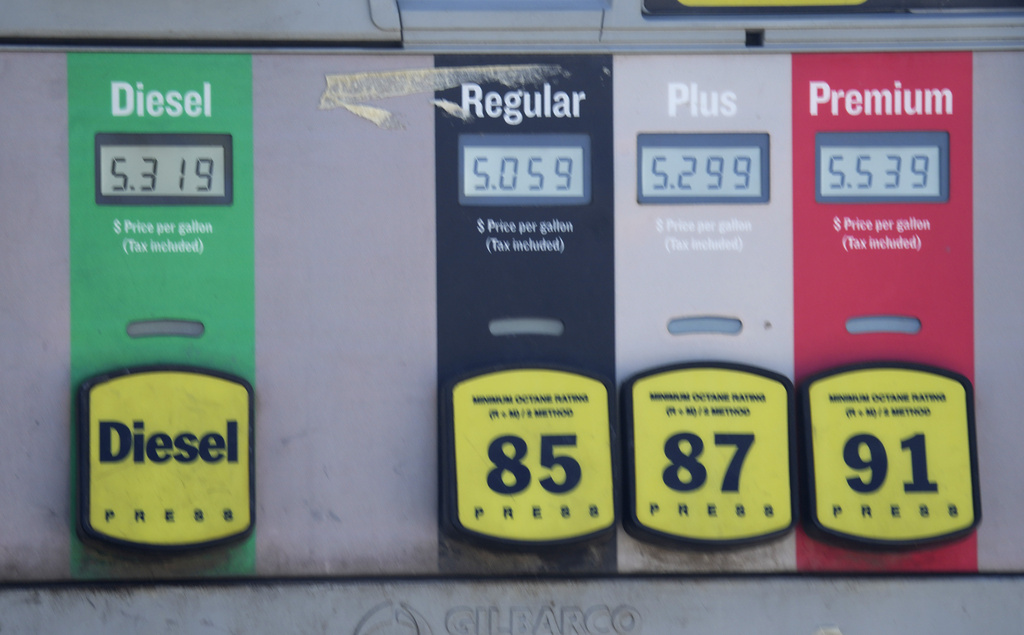Consumer Inflation Edges Up in July After 12 Months of Declines
Consumer prices rose 3.2 percent from a year earlier, up from a 3 percent annual rise in June, the lowest rate in more than two years.

WASHINGTON — Inflation in America edged up in July after 12 straight months of declines. Yet excluding volatile food and energy costs, so-called core inflation matched the smallest monthly rise in nearly two years, a sign that the Federal Reserve’s interest rate hikes have continued to slow price increases.
The inflation data the government reported Thursday showed that overall consumer prices rose 3.2 percent from a year earlier. That was up from a 3 percent annual rise in June, which was the lowest rate in more than two years. The latest figure remained far below last year’s peak of 9.1 percent, though still above the Fed’s 2 percent inflation target.
The Fed, economists, and investors, though, pay particular attention to core inflation figures for signs of where price pressures might be headed. From June to July, core inflation remained a tame 0.2 percent, thanks to easing prices for such items as groceries, used vehicles, and electronics.
“Core prices are moving in the right direction,” the chief American economist for High Frequency Economics, Rubeela Farooqi, said. She called that “welcome news” for Federal Reserve policymakers.

Thursday’s price data will be among the key barometers the central bank will weigh in deciding whether to continue raising interest rates. In its drive to tame inflation, the Fed has raised its benchmark rate 11 times since March 2022 to a 22-year high.
Overall prices, measured on a month-to-month basis, rose 0.2 percent in July; roughly 90 percent of it reflected higher housing costs. Excluding shelter, Paul Ashworth of Capital Economics calculated that core prices actually fell 0.1 percent from June to July.
Food prices, which have pressured Americans’ budgets for more than two years, rose a mild 0.2 percent from June to July. Eggs, meat, beer, and dairy products all declined in price, though food is still up 4.9 percent over the past 12 months. Also falling in July were prices of televisions, audio equipment, and pet food.
Energy costs rose just 0.1 percent. Modestly higher gasoline prices were offset by falling electricity prices.
Used-vehicle prices fell for a second straight month, dipping 1.3 percent from June and 5.6 percent from a year ago. Those prices had surged last year as a shortage of computer chips disrupted production of new vehicles, forcing more buyers into the used market. The chip shortage has eased, and new-car production has rebounded, thereby reducing demand for used cars and trucks.
On a three-month basis, consumer inflation was an annualized 1.9 percent from May through July, the slowest such pace in three years. Some economists prefer the three-month figure because it captures inflation trends with less volatility than the month-to-month figures.
Economists say that in the Fed’s fight to conquer inflation, the easy progress has likely already been achieved. Gasoline prices, for example, though liable to bounce around from month to month, have already plunged from a peak national average of more than $5 a gallon, which was reached in June of last year after Russia’s invasion of Ukraine.

Now, the Fed faces a daunting problem: Inflationary pressures in service businesses — restaurants, hotels, entertainment venues, and the like — where wages represent a substantial share of costs. Labor shortages have led many of these services companies to sharply raise pay.
Last week, for example, the Labor Department reported that average hourly wages rose 4.4 percent in July from a year earlier, more than expected. To cover their higher labor costs, companies have typically raised their prices, thereby fueling inflation.
Another factor working against continued declines in year-over-year inflation rates is that prices soared in the first half of last year before slowing in the second half. So any price increase in July would have the effect of boosting the year-over-year inflation rate.
Still, economists caution against reading too much into one month of numbers. Many of them expect inflation to continue trending lower.
Despite chronic concerns about higher labor costs, one closely watched measure of wages and salaries — the Labor Department’s employment cost index — grew more slowly from April through June. Excluding government jobs, employee pay rose 1 percent, less than the 1.2 percent increase in the first three months of 2023. Compared with a year earlier, wages and salaries grew 4.6 percent, down from a year-over-year increase of 5.1 percent in the first quarter.
Many Americans continue to feel under pressure from higher prices.
“There are some things you can stop buying or slow down on buying,” said Mark Dye of Port Saint Lucie, Florida. “The cost of junk food has gone outrageously high. It’s $5, $6 for a bag of chips. And I just think that is ridiculous. And then we pay even more for the healthy stuff.”
Likewise, Richard Priedits of Grand Rapids, Michigan, said he’s noticed higher costs during his annual vacation out West.
“We are using credit cards a lot more,” he said as he stopped at the Red Rock Canyon National Conservation Area in Nevada. “The hotel was probably about $100 more … We filled up the tank this morning. It was like $90.”
Prices, he said, are high back in Michigan, too: “It’s expensive everywhere.”
Fed officials will have plenty of data to absorb before deciding whether to continue raising rates. Thursday’s report is the first of two CPI numbers the policymakers will see before their next meeting, set for September 19 and 20. In addition, their favored inflation gauge, called the personal income expenditures price index, comes out on August 31. And the August jobs report will be released on September 1.
The moderating pace of inflation, combined with a resilient job market, has raised hopes that the Fed may achieve a difficult “soft landing” — raising rates enough to tame inflation without causing a painful recession.
“Barring a hot August CPI and labor market report, the progress should encourage the [Fed] to skip a rate hike on Sept. 20 and, in our view, for the remainder of this exceptional tightening cycle,” a senior economist at BMO Capital Markets, Sal Guatieri, said. “That can only increase the prospect for a soft landing.”
Many economists and market analysts think the Fed’s most recent rate hike in July will prove to be its last: More than 90 percent of traders now expect no Fed hike next month, according to the CME Group’s FedWatch Tool.
Associated Press
